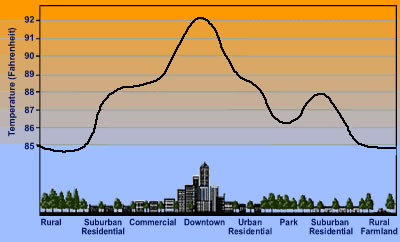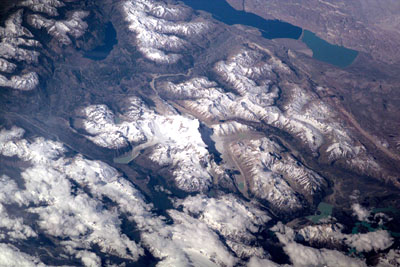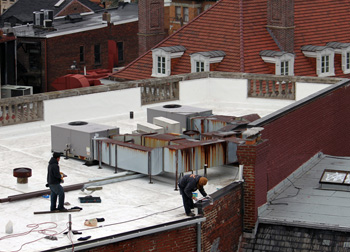Click on image for full size
Lisa Gardiner / Windows to the Universe, based on a figure from the Lawrence Berkeley National Laboratory
The Urban Heat Island Effect
The air in urban areas can be 2 - 5°C (3.6 - 9°F) warmer than nearby rural areas. This is known as the urban heat island effect. It’s most noticeable when there is little wind. An urban heat island can increase the temperature and length of a heat wave. And city heat can influence the weather - changing wind patterns, clouds, and precipitation.
What makes cities warmer? There are many factors that can influence the urban heat island effect. Changes to the land surface that are made in urban areas have a large impact on whether a heat island forms. For example, many cities have fewer trees than surrounding rural areas. Trees shade the ground, preventing the Sun’s radiation from being absorbed. Without them, the ground surface heats up. Dark rooftops and pavement absorb more radiation too. Automobiles, which make heat from their engines and exhaust, also contribute to the heat island effect. Fewer plants in urban settings mean that less evapotranspiration occurs, a process that cools the air.
Some people have wondered whether growing cities have caused global warming because of their urban heat islands. There is very strong evidence that this is not the cause of global warming. According to the Intergovernmental Panel on Climate Change, global warming is very unlikely to be affected significantly by growing urban areas.
Today, many cities are making an effort to combat the urban heat island effect. White or reflective materials are being used for roofing and roads. Trees are being planted along city streets. And, in many areas, green roofs - living plants on rooftops – are being installed.















